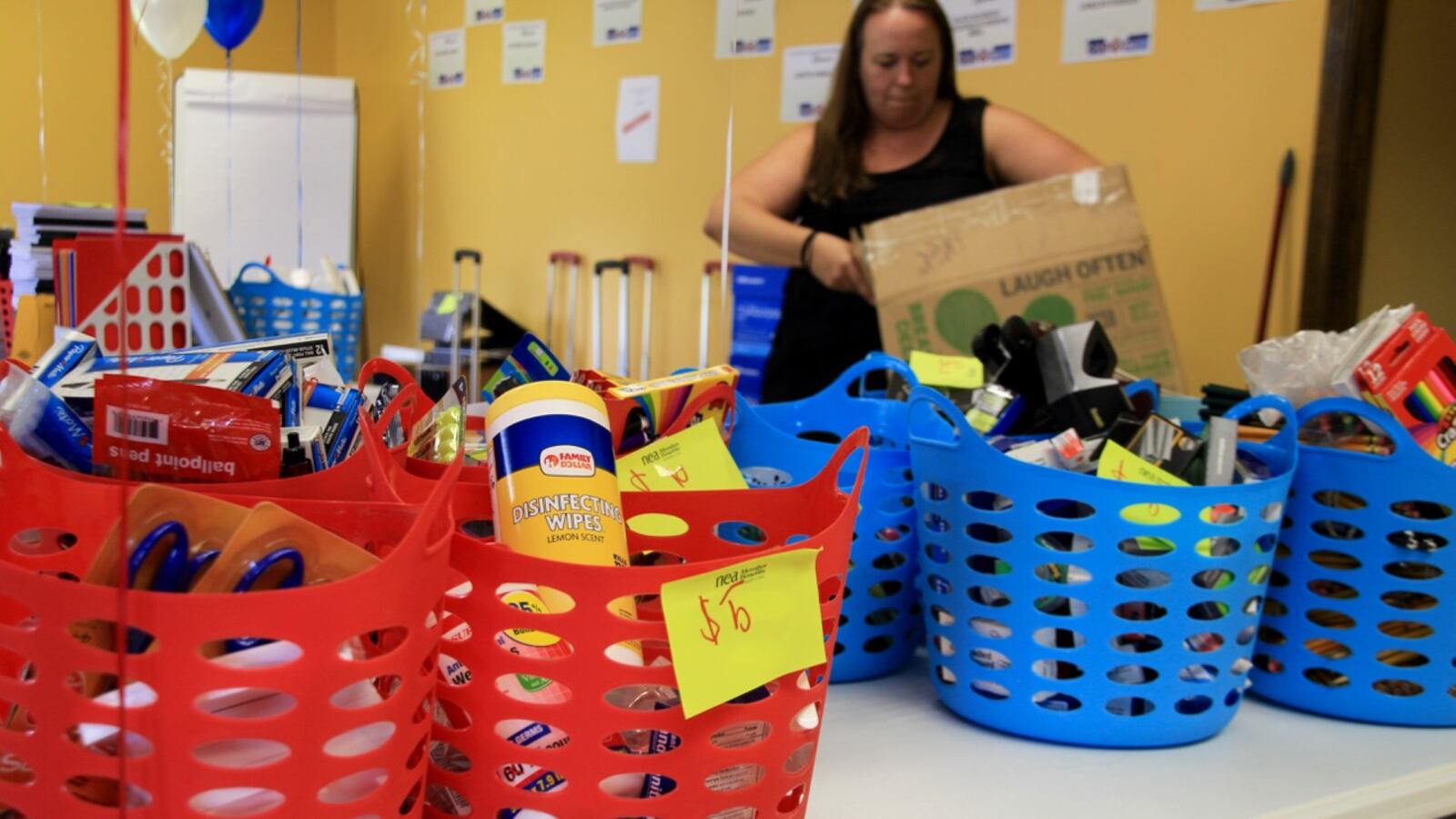For Crescent Bynum, a culinary arts instructor at Hamilton High School, the $100 she receives from Shelby County Schools at the start of the year buys some pencils and paper.
It doesn’t buy cleaning supplies for her kitchen classroom. It doesn’t buy extra food to prepare when her class runs out. It doesn’t buy chef coats for students who can’t afford to pay for them. Bynum pays for all of that out of her own pocket.
“It’s just the way it is that inner-city school teachers spend more than others because of (lack of) parent participation,” Bynum said. “We don’t receive many of the supplies we need from parents or the district, so we buy it. You know you’re not going to be reimbursed. But if you need something, do you sit back and go without? You go get what you need to teach.”
Bynum is typical of public school teachers in her Memphis district — and across the nation. Most dig into their personal resources to pay for classroom supplies and to help students with their needs.
To help address the gap, the Memphis district on Friday unveiled its Teacher Tool Box, a supplies depot where teachers at high-need schools can obtain free supplies starting next month. The resource is housed at the district’s central offices at 160 S. Hollywood St., and teachers must make appointments to visit. Priority will be given to teachers who work in priority schools, which are the lowest-performing 5 percent of schools in Tennessee in terms of academic achievement.
“While visiting more than 100 classrooms last year, I had teachers tell me they needed more school supplies — that what they need often comes out of their pocket,” Superintendent Dorsey Hopson said at Friday’s ribbon-cutting event.
Teachers, we want to know how much you spend on your classroom. Answer a quick poll here:
Powered byTypeformThe United Education Association, an affiliate of the Tennessee Education Association, also hosted a “teacher survival store” in July in Memphis, inviting new teachers to use monopoly money distributed at training events to purchase supplies. The idea was to ease the burden on new teachers tho want to “look like you have everything you need, even before you’ve had a paycheck,” said Tikeila Rucker, a Shelby County teacher and TEA affiliate leader.
Shelby County Schools allocates $100 to teachers for individual school supplies at the start of the year. Special education teachers are given a little more, and for some schools, an additional $100 gets pooled by grade level or department. That’s a far cry from what’s recommended per student for materials and supplies under Tennessee’s formula for allocating money to districts, called the Basic Education Program, or BEP. The BEP recommends $74.25 per student for classroom supplies, which calculates to $1,485 for a classroom of 20.
In Metropolitan Nashville Public Schools, the state’s second largest district behind Shelby County Schools, the district allocates $200 per teacher for basic education supplies. Each school receives another $100 per teacher for supplies — to be pooled and spent as the faculty and principal choose.
The BEP is a spending formula designed to calculate the cost of educating students; it doesn’t actually determine how districts spend their state funding. For cash-strapped school systems such as Shelby County Schools, money allotted for supplies often goes toward other necessities, leaving teachers to pick up the slack. Many say they spend anywhere from $400 to $1,000 of their own money every year on classroom needs.

Nationally, teachers spent $1.6 billion of their own money on school and instructional supplies in the 2012-2013 school year, according to the most recent survey on the subject by the National School Supply and Equipment Association, now called the Education Market Association.
The survey found that 99.5 percent of teachers reported spending in order to do their work. On average, teachers spent a total of $945 on classroom materials, with 10 percent spending more than $1,000 per year.
Nikki Wilks, an English teacher at Memphis Kingsbury High School, said she spent more than $1,000 on supplies during her first year of teaching, and more than $500 in each subsequent year.
“I never feel like I’m just spending money frivolously, because I’m told I can’t turn a student away if they don’t have paper and pencil,” Wilks said. “I want to do projects, but I work at a Title I school, and I can’t tell students that they have to buy a certain book for class. If I’m not buying it, where are my kids going to find it?”
How to help
Teachers are increasingly turning to crowdsourcing sites on social media to help stock their classrooms.
You can search by location at DonorsChoose.org and ClassWish.org.
DonorsChoose.org lets you sort by schools of “highest poverty level,” or schools where more than 65 percent of students are on free or reduced-price lunch.
Parents and school alumni also can make gifts. Wilks said teachers at Kingsbury High posted their supply list on the school’s Facebook page and have been surprised by the response from alumni.
Reporter Grace Tatter contributed to this report.
Editor’s note: This article has been corrected to say that the United Education Association hosted a teacher survival store. A previous version incorrectly stated that the Tennessee Education Association ran the store. The United Education Association is an affiliate of the Tennessee Education Association.

